

Thesis title: Spectral States of Galactic Black Hole Binaries
Supervisor: Andrzej Zdziarski
Year of defence: 2000
Thesis title: Statistical Properties of the Cosmic Velocity Fields - Numerical Simulations
Supervisor: Michał Różyczka
Year of defence: 2000
(National Center for Nuclear Research, Poland)
Thesis title: Testing the Gravitational Instability Theory with 2-D Galaxy Surveys
Supervisor: Roman Juszkiewicz
Year of defence: 2000
(Nicolaus Copernicus Astronomical Center)
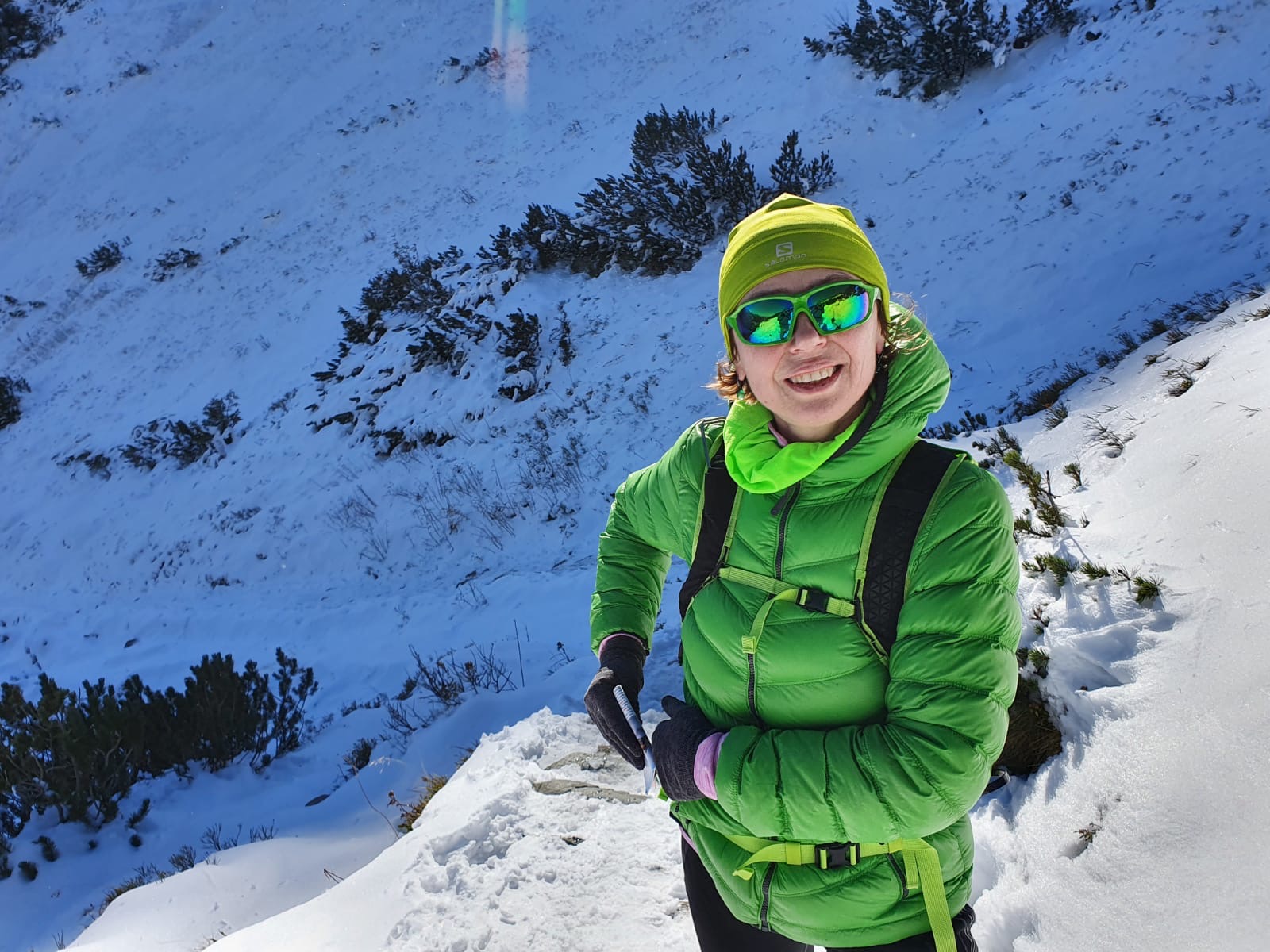 Agata Różańska grew up in Bydgoszcz, town in northern Poland. Her master's degree in astronomy, she completed at the Faculty of Physics University of Wasaw. PhD in astrophysics titled: Coexistence of the cold and the hot plasma in the vicinity of the black hole she defended in the year 2000 under the supervision of prof. Bożena Czerny. She obtained the habilitation degree for the work titled: The effects of X-ray reprocessing in Active Galactic Nuclei, in 2009. In the year 2020 she received the title of professor. Currently, she works at Nicolaus Copernicus Astronomical Center, Polish Academy of Sciences, Poland.
Her areas of research include simulations of radiative transfer through the warm ionized media, through the hot atmospheres of neutron stars and atmospheres of accretion disks around black holes in active galactic nuclei and in X-ray. She started the study of multi-phase regions around supermassive black holes in the centres of galaxies. Agata is a leader of Polish team of scientist and engineers working on the development of subsystems for the ATHENA (Advanced Telescope for High Energy Astrophysics – new generation space mission, with a launch foreseen in 2032. She is a member of Polish Astronomical Society, International Astronomical Union and European Astronomical Society. Since 2013, Agata is the Treasurer of the Polish Astronomical Society. In 2019 she was appointed a member of Space and Satellite Research Committee of the Polish Academy of Sciences for the 2019–2022 term. She was elected a Council member of the European Astronomical Society for the 2020–2024 term. Agata is an author of public outreach articles, lectures and popular science movies.
Agata Różańska grew up in Bydgoszcz, town in northern Poland. Her master's degree in astronomy, she completed at the Faculty of Physics University of Wasaw. PhD in astrophysics titled: Coexistence of the cold and the hot plasma in the vicinity of the black hole she defended in the year 2000 under the supervision of prof. Bożena Czerny. She obtained the habilitation degree for the work titled: The effects of X-ray reprocessing in Active Galactic Nuclei, in 2009. In the year 2020 she received the title of professor. Currently, she works at Nicolaus Copernicus Astronomical Center, Polish Academy of Sciences, Poland.
Her areas of research include simulations of radiative transfer through the warm ionized media, through the hot atmospheres of neutron stars and atmospheres of accretion disks around black holes in active galactic nuclei and in X-ray. She started the study of multi-phase regions around supermassive black holes in the centres of galaxies. Agata is a leader of Polish team of scientist and engineers working on the development of subsystems for the ATHENA (Advanced Telescope for High Energy Astrophysics – new generation space mission, with a launch foreseen in 2032. She is a member of Polish Astronomical Society, International Astronomical Union and European Astronomical Society. Since 2013, Agata is the Treasurer of the Polish Astronomical Society. In 2019 she was appointed a member of Space and Satellite Research Committee of the Polish Academy of Sciences for the 2019–2022 term. She was elected a Council member of the European Astronomical Society for the 2020–2024 term. Agata is an author of public outreach articles, lectures and popular science movies.
Thesis title: Coexistence of the cold and the hot plasma in the vicinity of the black hole
Supervisor: Bożena Czerny
Year of defence: 2000
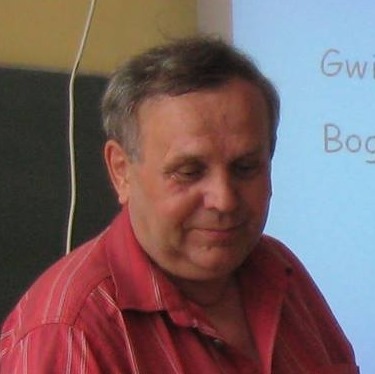
Ireneusz Włodarczyk was born on May 7, 1950, in Kalisz. He observed sunspots there and had sent the results to prof. Jan Mergentaler. After graduating from the Technical Secondary School of Economics there in 1969, he started studying astronomy, specializing in heliophysics, at the Faculty of Mathematics, Physics and Chemistry of the University of Wrocław. He finished it in 1974, defending his MA thesis under the supervision of doc. Bogdan Rompolt. For 37 years, he had worked in the Silesian Planetarium, from 1975, as the head of the local astronomical observatory. Since 1977 he has been observing asteroids and comets and has been studying their dynamics. He started the observations based on the substantive help of Assoc. Maciej Bielicki from the University of Warsaw. On June 11, 1998, he published in Brian Marsden's Minor Planet Center the first Polish astrometric position of the asteroid obtained using a modern SBIG-ST8 CCD camera (MPC 31 870) and on October 8, 1998, the first Polish astrometric comet position (MPC 32 565). Until 2000, he had published nearly 1,000 astrometric observations of asteroids and comets in the MPC. The observations were made by several employees of the Silesian Planetarium.
From 1983, he collaborated with prof. dr hab. Grzegorz Sitarski from the Space Research Center of the Polish Academy of Sciences in Warsaw. The cooperation consisted in testing own observations made in Chorzów and presenting the results of their calculations and own computer programs describing the movements of asteroids and comets. He deals with the observations and dynamics of Near-earth Asteroids and comets, including those discovered at the Moletai astronomical observatories in Lithuania, Baldone in Latvia and VATT in the USA, cooperating with these centres. He also deals with potential asteroid collisions with the Earth, including the dangerous asteroid Apophis until March 2021. He is also studying the evolution of asteroid families. In addition, he deals with the dynamics of Mars crossers as well as asteroids and comets in retrograde orbits.
In 2011, together with astronomy enthusiasts in Rozdrazew, a commune in Greater Poland, they established the 19th branch of the Polish Society of Amateur Astronomers. From the beginning until now, 2021, he is its president. He is a member of Divisions A, C and F of the International Astronomical Union.
Thesis title: Influence of Accuracy of Determination of Orbit of Asteroids and Comets for Prediction theirs Motions over Long Intervals of Time
Supervisor: Grzegorz Sitarski
Year of defence: 2000
(Nicolaus Copernicus Astronomical Center)
Thesis title: Population Synthesis in Modern Astrophysical Applications
Supervisor: Tomasz Bulik
Year of defence: 2001
Thesis title: Modeling the Gamma-Rays Flares in Blazar Jets
Supervisor: Marek Sikora
Year of defence: 2002
Thesis title: Photometry and Analysis of Cepheids in the M31 and M33 Galaxies
Supervisor: Janusz Kałużny
Year of defence: 2002
Thesis title: Analysis of the X-ray Background Radiation
Supervisor: Andrzej Sołtan
Year of defence: 2002
Thesis title: Radiative Processes in Accreting Black Holes
Supervisor: Andrzej Zdziarski
Year of defence: 2002
(Nicolaus Copernicus Astronomical Center)
Thesis title: Wyznaczanie kosmologicznego parametru Beta przy użyciu prędkości i przyśpieszenia Grupy Lokalnej
Supervisor: Michał Różyczka
Year of defence: 2003
(Nicolaus Copernicus Astronomical Center, Toruń)
Thesis title: Radiative Processes in the Magnetospheres of Isolated Neutron Stars
Supervisor: Bronisław Rudak
Year of defence: 2003
(Center for Theoretical Physics of PAS)

Agnieszka Janiuk was born and grew up in Warsaw. She studied astronomy at the Physics Department of the Warsaw University, where she received her Master of Science degree in 1998. She learned there about the physics of accretion, and active alactic nuclei, thanks to the course given by dr Andrzej Kurpiewski. The MSc thesis was prepared however under the supervision of prof. Bozena Czerny, who was a faculty member at the N. Copernicus Astronomical Center, Polish Academy of Sciences. After that, Agnieszka Janiuk continued her research via PhD program at NCAC, and she worked with prof. Czerny on the accretion pocesses in AGN and Galactic black hole X-ray binaries (XRBs). As a part of that PhD, she developed a new numerical code for simulating the global structure and time evolution of an unstable accretion disk, which is subject to radiation pressure driven theramal and viscous instabilities. The code is now publicly available under the name GLADIS and serves mainly for pedagogical purposes.
The postdoctoral projects of Agnieszka, started in 2003 at Max Planck Institute for astrophysics in Garching, and then continued with prof. Daniel Proga at the University of Nevada, Las Vegas, and finally during the tenure-tarck contract at CAMK, were devoted mostly to the cosmic explosions named gamma ray bursts. These phenomena share some physical properties of the formerly mentioned black hole systems, but they are much more violent in nature. They are launching ultrarelativistic jets on the cost of black hole rotation and accretion mediated by the strong magnetic fields. In addition, nuclear reactions that occur in the very hot and dense plasmas of their accretion disks, lead to copious emission of neutrinos. Finally, as we know now from gravitational wave observations and their electromagnetic counterparts, many GRBs originate from binary neutron star mergers, whose ejecta are the nucleosynthesis sites for the heavies elements in the Universe.
From 2010, Agnieszka Janiuk works as a faculty member at the Center for Theoretical Physics of PAS. Since then, she leads her own research group, and has already supervised a number of post-docs, PhD projects and Master students. In 2021, she was awarded the full professorship in natural sciences by the President of Poland.
Official website: http://old.cft.edu.pl/astrofizyka/?page_id=98
Thesis title: Disk Accretion onto a Black Hole
Supervisor: Bożena Czerny
Year of defence: 2003
Thesis title: A Simple Model of the Evolution of Solids in Protoplanetary Disk
Supervisor: Michał Różyczka
Year of defence: 2003
(Institute of Physics, Pedagogical University of Krakow, Poland)
Thesis title: Spektroskopia i fotometria wybranych układów prekataklizmicznych
Supervisor: Marek Sarna
Year of defence: 2003
Thesis title: Late Stages of Stellar Evolution in Binary Systems
Supervisor: Romuald Tylenda
Year of defence: 2004
(National Center for Nuclear Research, Poland)
Thesis title: Mass and Radius Determination of X-ray Bursts Source MXB 1728-34
Supervisor: Jerzy Madej
Year of defence: 2004
(University of Bialystok, Faculty of Physics, Poland)
Thesis title: Global Parameters of Active Galactic Nuclei
Supervisor: Bożena Czerny
Year of defence: 2004
(Nicolaus Copernicus Astronomical Center)
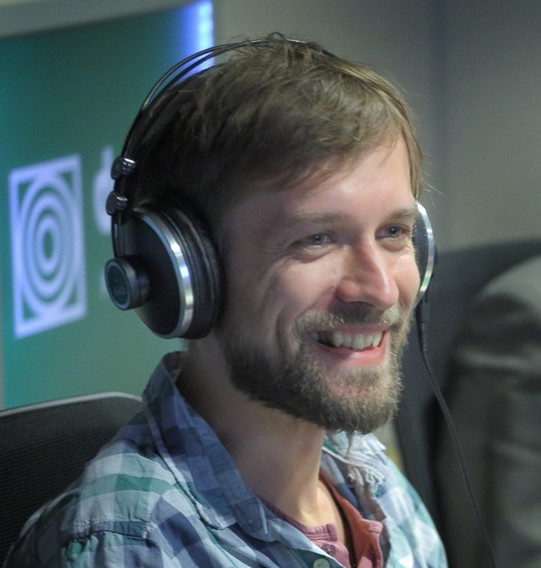
Michał Bejger's research interests revolve around the gravitational-wave astronomy: its data analysis methods (and, in general, methods of analyzing any difficult, noisy data) and modeling of various astrophysical compact objects using numerical general relativity, and the physics of extremely dense matter in the interiors of neutron stars. This often requires a lot of coding, the use of high-performance computing (with hardware accelerators like the Graphical Processing Units) and applications of novel types of machine learning algorithms. In the past, he was a Marie Curie fellow and a visiting astronomer at the Paris Observatory, as well as research scientist in the Steinbuch Centre for Computing in Karlsruhe, Germany the Wigner center in Budapest, Hungary, and the Paris AstroParticule et Cosmologie gravitational-waves group (APC). He has been a member of the LIGO-Virgo collaboration since 2011, and a work group leader of the COST action G2Net since 2018. He is also actively involved in the popularization of science, being an editor of the astronomy section of the science magazine ''Delta'' since 2011.
Thesis title: Neutron Star Dynamics and the Dense Matter Equation of State
Supervisor: Paweł Haensel
Year of defence: 2005
(Nicolaus Copernicus Astronomical Center)
Thesis title: AMR Models of Protoplanetary Discs
Supervisor: Michał Różyczka
Year of defence: 2005
Thesis title: Nonlinear Couplings in Multimode Stellar Pulsations
Supervisor: Wojciech Dziembowski
Year of defence: 2005
(Nicolaus Copernicus Astronomical Center, Toruń)
Thesis title: Observational Aspects of Oxygen and Carbon Stars Evolution in Post-AGB Phase
Supervisor: Ryszard Szczerba
Year of defence: 2006
(Nicolaus Copernicus University, Toruń, Poland)
Thesis title: Pulsar Characteristic Across The Energy Spectrum
Supervisor: Bronisław Rudak
Year of defence: 2006
(Center for Astrophysics | Harvard & Smithsonian, USA)
Małgorzata Sobolewska is an X-ray astronomer working at the Smithsonian Astrophysical Observatory in the High Energy Astrophysics Division. She works on understanding high energy phenomena associated with the accretion onto compact objects such as black holes and neutron stars. To do this, she uses X-ray telescopes aboard various satellites in order to record radiation emitted by quasars and X-ray binaries, and she builds theoretical models to explain the properties of this radiation. She is also a member of the Operations and Science Support Division in the Chandra X-ray Center, where her main activities include monitoring and trending analysis of the subsystems of the Chandra X-ray Observatory, NASA's flagship mission for X-ray astronomy.
Thesis title: Spectral and Timing Methods of Studying Geometry of Accretion onto Compact Objects
Supervisor: Piotr Życki
Year of defence: 2006
(University of Tasmania)

Krzysztof Bolejko studied at our Institute between 2004 and 2007. During this time he investigated inhomogeneous cosmological models under the supervision of prof. Andrzej Krasiński. The results he obtained laid foundations for the book "Structures in the Universe by Exact Methods: Formation, Evolution, Interactions", which was published by the Cambridge University Press.
After his PhD he held several prestigious post-doctoral fellowships, in Australia, United States, South Africa and Europe. These include Peter and Patricia Gruber Foundation Fellowship at University of Melbourne, Fulbright Fellowship at Steward Observatory or Marie Curie Fellowship at University of Oxford. In 2017 he obtained habilitation from the Jagiellonian University. Since 2018 he has been a Fellow of the Astronomical Society of Australia, and since 2019 a Fellow of the Higher Education Academy.
He is now a Senior Lecturer in Physics at the University of Tasmania. His field of expertise is theoretical cosmology, and his research focuses on general relativity and investigation of the nature of gravity.
Contact: krzysztof.bolejko@utas.edu.au
Thesis title: Application of Inhomogeneous Solutions of the General Relativity to Cosmology
Supervisor: Andrzej Krasiński
Year of defence: 2007
Thesis title: Selected Aspects of Periodic and Quasi-Periodic Variability of Accreting Black Holes
Supervisor: Bożena Czerny
Year of defence: 2007
(Astronomical Observatory, University of Warsaw)
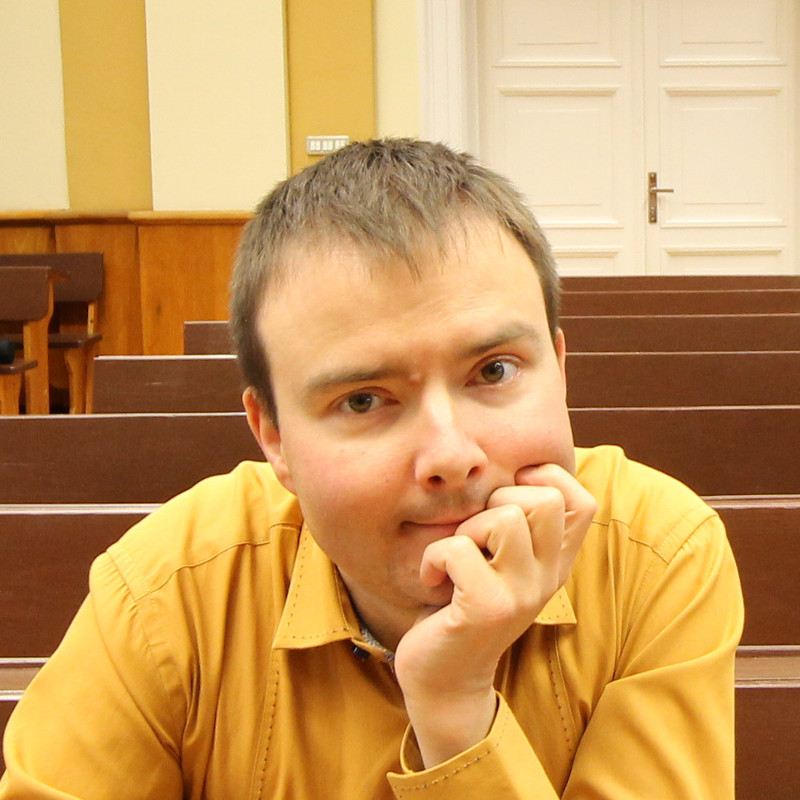
Paweł Pietrukowicz was born in Gorzów Wielkopolski in 1978. In 1997 he moved to the Polish capital to start his astronomical career at the University of Warsaw (MSc, 2002) and to continue at Nicolaus Copernicus Astronomical Center (PhD, 2007). His research interests focus on structure and evolution of the Milky Way, properties of stellar clusters and variable stars, mainly pulsating stars. He earned a lot of observational experience during his postdoctoral position at Catolica University in Santiago de Chile in years 2007-2009. Since 2010 Paweł Pietrukowicz works as Assistant Professor at Astronomical Observatory, University of Warsaw. He is an active member of the Optical Gravitational Lensing Experiment (OGLE) team. His most important achievements include the discovery of a new, unexpected class of pulsating stars named Blue Large-Amplitude Pulsators (2017), discovery of thousands of variable stars of various types in the Galactic disk (2013), and detection of the first, very rare phenomenon of the gravitational microlensing in a globular cluster (2005).
Thesis title: Searches for Dwarf Novae in Globular Clusters Based on CASE Data
Supervisor: Janusz Kałużny
Year of defence: 2007
Thesis title: Modelling and Data Analysis of the High-mass X-ray Binaries Cyg X-1 and Cyg X-3
Supervisor: Andrzej Zdziarski
Year of defence: 2007
(Department of Astrophysics, Radboud University, the Netherlands)

Monika Moscibrodzka received her Master's degree in 2004 at the University of Warsaw. In 2008 she completed PhD studies in our Institute under the supervision of prof. Bożena Czerny. In the following years she held post-doctoral positions in University of Illinois and University of Nevada. Now she is an Assistant Professor in Radboud University, the Netherlands. Her field of research is relativistic astrophysics. She is a core member of the Event Horizon Telescope Collaboration.
Thesis title: The Dynamics and Radiation Spectra of Low Angular Momentum Accretion Flow onto a Black Hole
Supervisor: Bożena Czerny
Year of defence: 2008
Thesis title: Observational Properties of SU UMa Type Dwarf Novae
Supervisor: Arkadiusz Olech
Year of defence: 2009
(Nicolaus Copernicus Astronomical Center)
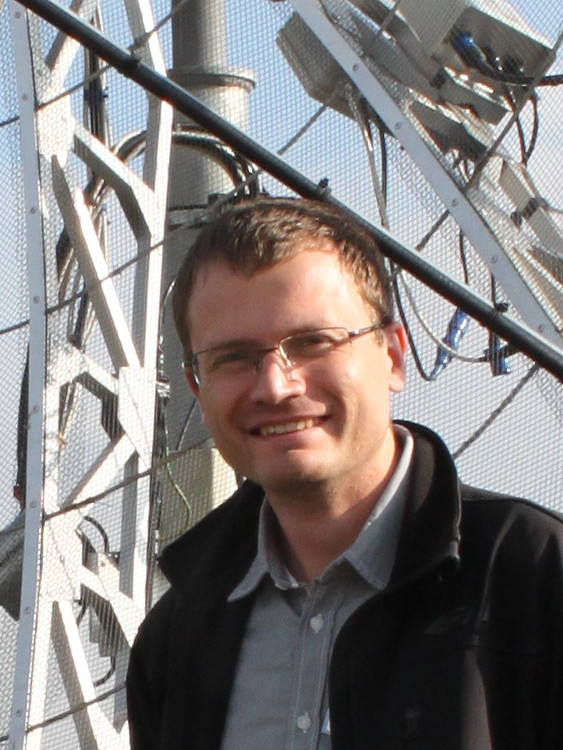
Radoslaw Smolec was born and grew up in Grudziądz. His interest in astronomy developed thanks to attending local astronomy club led by Małgorzata Śróbka-Kubiak in Grudziądz Planetarium and Astronomical Observatory. At the end of secondary school, he was introduced to the world of pulsating stars by prof. Wojciech Dziembowski, while travelling back home from astronomical Olympiad in Chorzow.
Master thesis, "Metallicity dependence of the Blazhko effect", was defended in 2004 under the supervision of prof. Paweł Moskalik, a faculty member at CAMK PAN. After that, Radoslaw continued his research via PhD program at CAMK PAN, supervised by prof. Moskalik. As part of his PhD research he developed nonlinear convective pulsation codes, recently implemented in the Modules for Experiments in Stellar Astrophysics (MESA) as Radial Stellar Pulsation (RSP) tool. Investigation of pulsation-convection coupling continued also during the post-doctoral research conducted in Astronomical Institute of the University of Vienna (2009-2011). Since 2012 he is back at the Copernicus Center leading various projects related to classical pulsators. Fields of expertise include stellar pulsation and stellar evolution theories, non-linear modelling of radial stellar pulsations and time-frequency analysis of photometric time series. Habilitation degree received in 2016.
Today Radoslaw Smolec is leading his own research group addressing various problems of stellar evolution and stellar pulsation theories. He is a member of the Araucaria Team and developer of the MESA.
Thesis title: Nonlinear modelling of radial stellar pulsation
Supervisor: Paweł Moskalik
Year of defence: 2009
(Institute of Physics, Pedagogical University of Krakow, Poland)
Thesis title: Eclipsing Binaries as Indicators of Age and Distance
Supervisor: Janusz Kałużny
Year of defence: 2009
To modify or update your profile please contact phdstudies@camk.edu.pl
The website was created as part of the CAMK's Foreign Promotion programme financed by the National Agency for Academic Exchange.